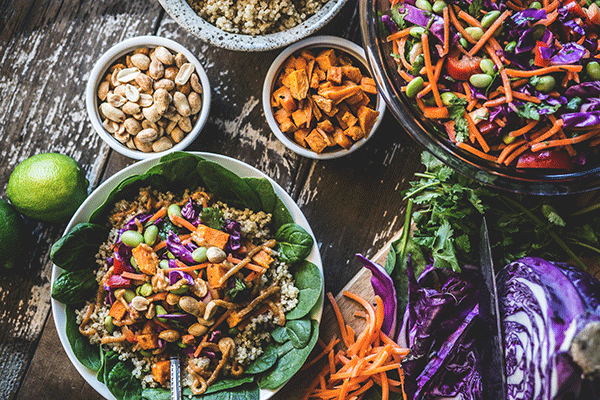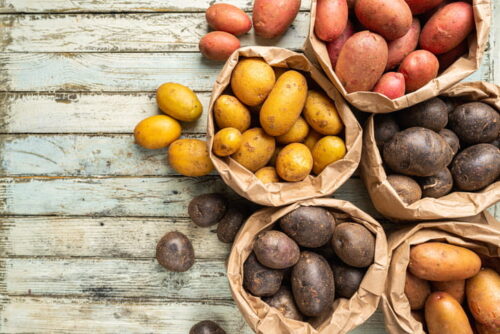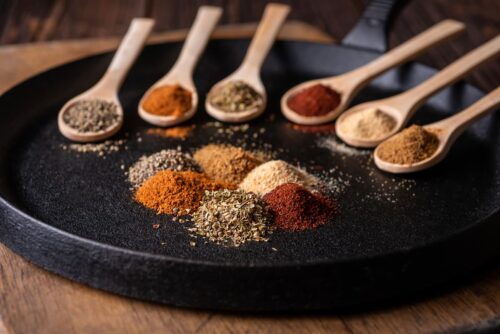Passive Overconsumption: The Unintended Intake of Excess Calories
Jeff Novick, MS, RDN

Have you ever ended up eating more calories than you intended? There are certain properties of food that, when we eat until we are comfortably full, result in the unintended consumption of excess calories. This is called the passive overconsumption of calories. We did not intend to overeat, but we did. Many foods contain several of the following properties that lead to the passive overconsumption of calories. Being aware of these can help us minimize the potential to over consume calories. As you will see, all of these go right along with the principles of calorie density and there is some overlap to them.
Here are 10 factors that lead to the passive overconsumption of calories:
1. Higher Calorie Dense Foods
As the calorie density of the food goes up, we are more likely to overconsume calories, especially as the calorie density goes over 700-1000 calories per pound. On a whole-food, plant-based diet (WFPB), the foods that are over 1000 calories per pound are bread products (breads, bagels, crackers, dry cereals, tortillas), dried/dry fruits, nuts, seeds and oils.
2. Higher Fat Foods
As the percentage of calories from fat goes up, we are more likely to over-consume calories, especially from added fats/oils. Adding fats/oils to food increases the overall percentage of calories from fat and the overall calorie density and decreases the overall satiety (per calorie). On a WFPB diet, the foods that are higher in fat are peanuts, soybeans, avocados, nuts, seeds and oils.
3. Liquid Calories
Liquid calories provide little if any satiety for their calorie load, so they do not fill you up as much as solid foods of equal calories. For example, it is much easier to over consume calories when consuming fruit juice, than the whole fruit. On a WFPB diet, the most common liquid calories are fruit and vegetable juices and non-dairy milks.
4. Added Free Sugars
Added free sugars are high in calorie density and low in satiety. As the percentage of calories from added free sugars in a food goes up, we are more likely to over consume calories. Adding free sugars to food increases the overall calorie density and decreases the overall satiety (per calorie). This includes all added free sugars, even those considered unrefined and/or natural such as maple syrup, molasses, etc.
5. Flour (Bread) Products
Most all flour (bread) products are higher in calorie density and lower in satiety, even if they are made from unrefined whole grains. On a WFPB diet, these foods include bread products (bread, bagels, dry cereal, crackers, tortillas) and baked chips.
6. Dry/Dried Foods
Food that is dried (and/or drier) and low in water have an increased calorie density and tend to be lower in satiety per calorie. On a WFPB diet, the foods that are dried/dry are dried fruits (raisins, prunes), naturally dry fruits (dates), bread products (bread, bagels, dry cereal, crackers, tortillas), baked chips, puffed cereals and popcorn.
7. Emulsifying, Pureeing, & Blending
Blending foods disrupts the fiber and reduces the satiety of the food per calorie, making it easier to overconsume the food. On the other hand, chewing food increases satiety. Examples of blended foods on a WFPB diet include smoothies and dried fruit/nut confections.
8. Hyper-Palatable Foods
These are foods that have been salted, sweetened and/or sauced. They stimulate the appetite and lead to over consumption. Examples include cookies, cakes, pastries, etc.
9. Vanishing Perceived Satiety
Foods that fall into this category appear to be high in satiety due to their large volume but are actually high in calorie density and low in satiety. This is because they are dry foods with their volume coming from air as opposed to water (which decreases calorie density and increases satiety). For example, cooked brown rice (high water content) is 560 calories/lb and brown rice cakes (high air content) are 1760 calories/lb, an over three-fold difference. On a WFPB diet, foods that have vanishing perceived satiety include air-popped popcorn, rice cakes and puffed cereals.
10. Ultra-Processed Foods
Ultra-processed foods tend to be high in fat, calorie density, salt, sugar, refined flours, fat and oil. They also tend to be low in fiber, water and satiety and so we are more likely to over consume calories from them.
If you are having a concern with the overconsumption of calories and managing your weight, greatly limiting and/or eliminating the above foods will help.
In Health,
Jeff Novick, MS, RDN
Recommended Articles

How to Cook Potatoes

Are There Any Spices to Avoid with Diabetes?







